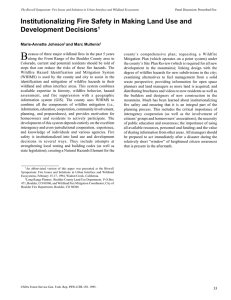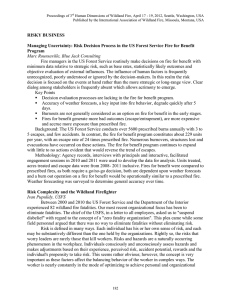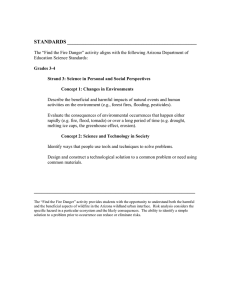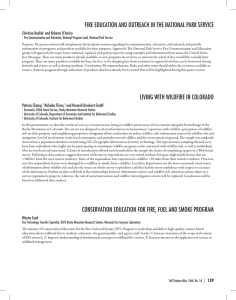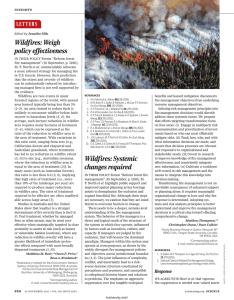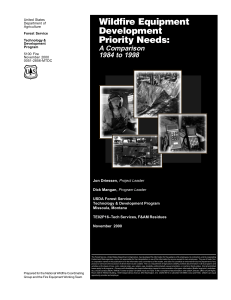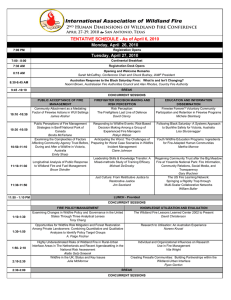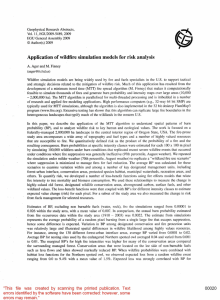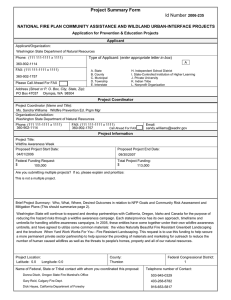neutral . Rather, wildfire is an important means through which... gender roles and power relations are maintained despite changing social
advertisement
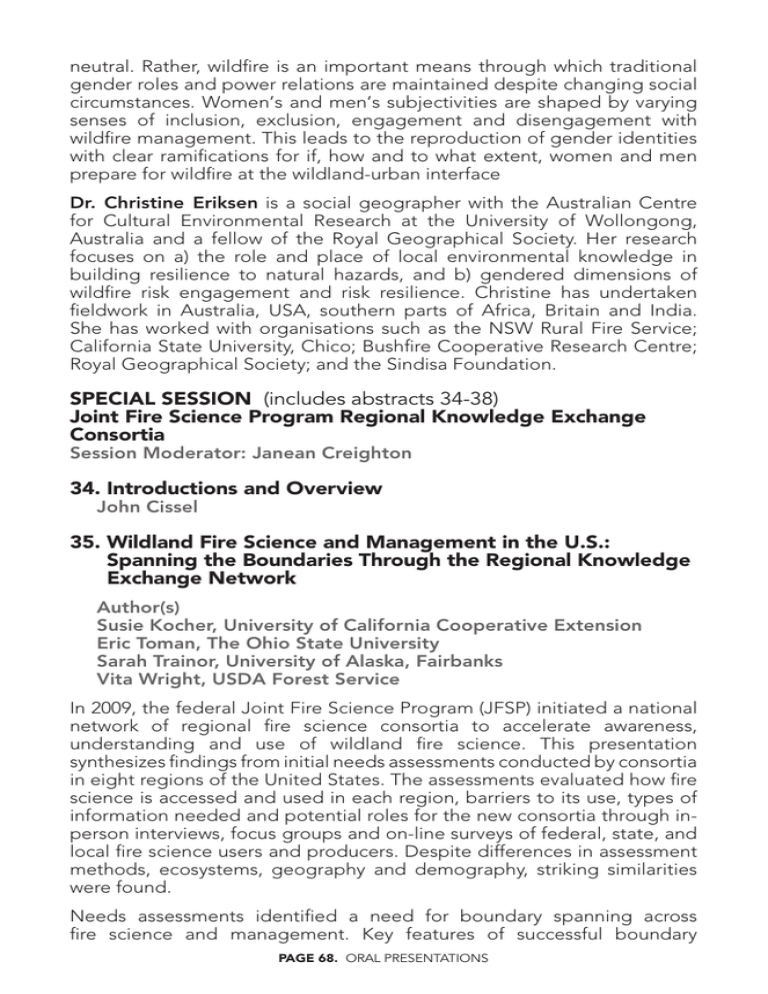
neutral. Rather, wildfire is an important means through which traditional gender roles and power relations are maintained despite changing social circumstances. Women’s and men’s subjectivities are shaped by varying senses of inclusion, exclusion, engagement and disengagement with wildfire management. This leads to the reproduction of gender identities with clear ramifications for if, how and to what extent, women and men prepare for wildfire at the wildland-urban interface Dr. Christine Eriksen is a social geographer with the Australian Centre for Cultural Environmental Research at the University of Wollongong, Australia and a fellow of the Royal Geographical Society. Her research focuses on a) the role and place of local environmental knowledge in building resilience to natural hazards, and b) gendered dimensions of wildfire risk engagement and risk resilience. Christine has undertaken fieldwork in Australia, USA, southern parts of Africa, Britain and India. She has worked with organisations such as the NSW Rural Fire Service; California State University, Chico; Bushfire Cooperative Research Centre; Royal Geographical Society; and the Sindisa Foundation. SPECIAL SESSION (includes abstracts 34-38) Joint Fire Science Program Regional Knowledge Exchange Consortia Session Moderator: Janean Creighton 34. Introductions and Overview John Cissel 35. Wildland Fire Science and Management in the U.S.: Spanning the Boundaries Through the Regional Knowledge Exchange Network Author(s) Susie Kocher, University of California Cooperative Extension Eric Toman, The Ohio State University Sarah Trainor, University of Alaska, Fairbanks Vita Wright, USDA Forest Service In 2009, the federal Joint Fire Science Program (JFSP) initiated a national network of regional fire science consortia to accelerate awareness, understanding and use of wildland fire science. This presentation synthesizes findings from initial needs assessments conducted by consortia in eight regions of the United States. The assessments evaluated how fire science is accessed and used in each region, barriers to its use, types of information needed and potential roles for the new consortia through inperson interviews, focus groups and on-line surveys of federal, state, and local fire science users and producers. Despite differences in assessment methods, ecosystems, geography and demography, striking similarities were found. Needs assessments identified a need for boundary spanning across fire science and management. Key features of successful boundary Page 68. oral presentations organizations are information salience, credibility and legitimacy. The information generated must be scientifically credible and carry a degree of legitimacy within the social worlds of both scientists and managers. The success of boundary organizations hinges on understanding the decision context and stakeholder perspective, developing strong stakeholder relationships and providing information that is accurate, credible and presented at relevant spatial and temporal scales. Findings showed that though use of and regard for Internet-based fire science information is universally high, in-person knowledge exchange is preferred. Obstacles to fire science application include lack of time, resources and access to the most relevant information as well as communication barriers between scientists and managers. Priority science topics identified across regions include fire effects, fuels and modeling, and best practices for prescribed burns. This synthesis found a clear need for better integration of fire science and management and suggests that consortia focus on a) organizing and consolidating the many sources of fire science through easily accessible websites and b) strengthening relationships between scientists and managers to facilitate production, communication and adoption of science that is relevant to managers’ concerns. The success of the new JFSP Knowledge Exchange Network at spanning the boundary between the scientific and land management worlds depends on engaging scientists and managers in these multiple ways. Susie Kocher is a natural resources advisor and registered professional forester for the University of California Cooperative Extension in the Central Sierra Nevada. She coordinated needs assessment work for the California Fire Science Consortium, is active with the Sierra Nevada and WUI module and is the CFSC evaluator. She also collaborates with the University of Nevada Cooperative Extension to organize Wildfire Awareness Week and an annual wildfire summit in the Lake Tahoe basin. She is doing applied research on the effects of different reforestation strategies taken after the 2007 Angora Fire in South Lake Tahoe. 36. Marketing Fire Science in the 21st Century: A Comprehensive Multimedia Marketing Strategy to Effectively Disseminate Fire Science Information Author(s) John Diaz, North Carolina State University Effectively disseminating fire science means thinking more strategically about how to market to key audiences. Effective marketing hinges on facilitating availability of information through network linkages of online resources in addition to traditional marketing efforts. This presentation will focus on detailing a comprehensive marketing strategy that utilizes an abundance of online resources, while also leveraging traditional mechanisms, to effectively disseminate fire science information. The context Page 69. oral presentations
